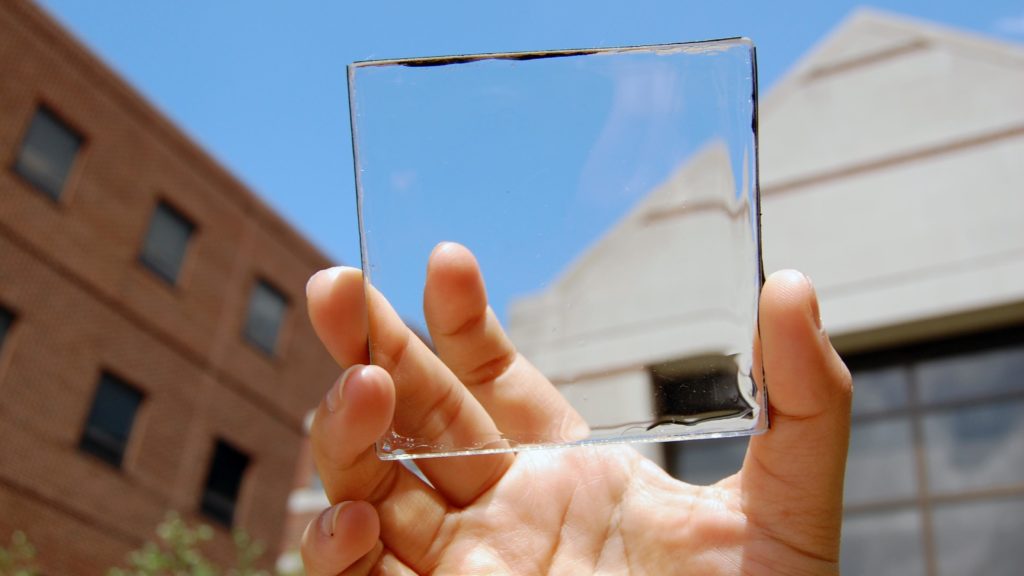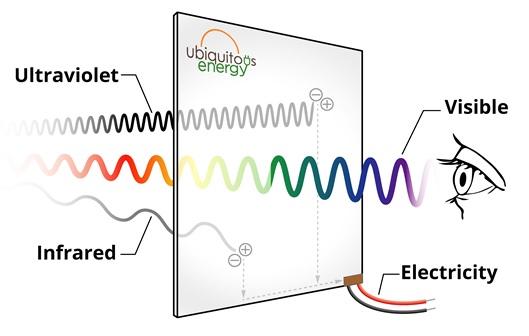Windows as solar panels
Transparent material that functions like solar panels can transform windows and façades into “green” energy generators. This innovation from the US is set to conquer the global market.
A typical sight in major cities around the world: a skyline dominated by the vast glazed exteriors of modern skyscrapers – that glint in the sunlight on fine days. It was this observation that gave materials science professor Richard Lunt of Michigan State University his ground-breaking idea: how much energy could be generated if you were to transform all of these windows and façades into solar panels? Quite clearly, a lot more than collectors installed on the roofs where there is substantially less surface area available.
Maximum efficiency
The dedicated researcher became obsessed with the thought. And so Lunt and his team set about developing transparent solar panels. A goal that other scientists have previously pursued, but with no satisfactory results to date. But Lunt persevered, and presented the first fruits of his labour in 2015: panels that can be used like window glass.
Since then, they have been working flat out to bring the development to market. What started out as test objects manufactured on a laboratory scale developed into window-sized units. They were very promising ones, as Lunt reports that they achieved the highest certified efficiency for a transparent solar cell.
What makes the transparent luminescent solar concentrator (or TLSC for short) special is that the material harvests solar energy without reducing light transmissivity in the process. This is made possible with the help of organic molecules that absorb light invisible to the human eye. The material is treated in such a way that it only absorbs ultraviolet and infrared wavelengths. They then “glow” at another wavelength, as Lunt explains. “The captured light is transported to the contour of the panel, where it is converted to electricity with the help of thin strips of photovoltaic solar cells,” Lunt remarks in the online magazine The Open Mind.
We reckon that this technology will be cheaper than traditional solar modules. Our expectation is for them to be similar in cost to high-quality windows.
Professor Richard Lunt, Michigan State University
The researchers are convinced that TLSC can be used to generate a substantial amount of electricity. Perhaps not enough for an entire building, but the generated power would be sufficient for lighting and consumer electronic devices. The technology could offset the energy consumption of large buildings in particular. This would naturally require the transparent solar cells to have a commensurate service life and be commercially viable. In support of the latter, however, is the fact that a large proportion of the cost of conventional photovoltaic systems is not due to the solar cells themselves, but the materials onto which they are mounted, i.e. aluminium or glass. Covering existing structures with solar cells could lower these costs.
Richard Lunt reports that they have founded a company that is working to commercialize the new technologies. The company, namely Ubiquitous Energy Inc., has already entered into partnerships with major glass manufacturers, such as the NSG Group (Nippon Sheet Glass, Co. Ltd.) and Asahi Glass.
An important goal of the developers is to manufacture power-generating glass that offers aesthetic alternatives for architects and designers to implement building-integrated photovoltaic systems. A large installation is due to be constructed on the Michigan State University campus this year.
As to the question of whether private homeowners will soon be able to afford windows with transparent solar cells as well, the scientist estimates that this technology will be cheaper than traditional solar modules. The expectation is that the cost will be similar to that of high-quality windows.
Text: Elisabeth Schneyder
Translation: Rosemary Bridger-Lippe
Photos: R. Lunt, Michigan State University, Ubiquitous Energy Inc., GettyImages


